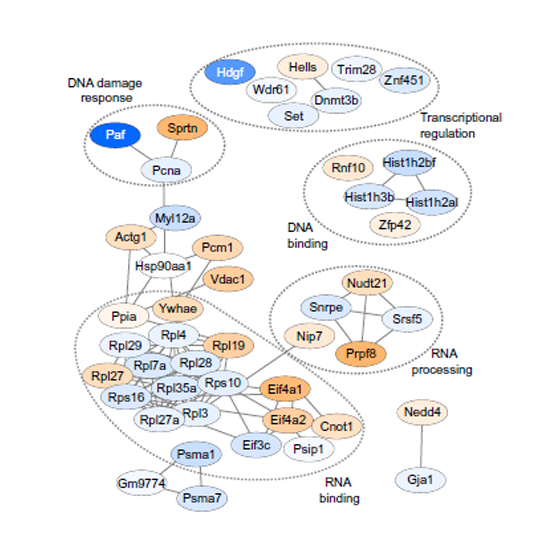Ubiquitome Analysis Reveals PCNA-Associated Factor 15 (PAF15) as a Specific Ubiquitination Target of UHRF1 in Embryonic Stem Cells
08-Dec-2017
Journal of Molecular Biology, Volume 429, Issue 24, Pages 3814-3824, https://doi.org/10.1016/j.jmb.2017.10.014
Journal of Molecular Biology, online article
Ubiquitination is a multifunctional posttranslational modification controlling the activity, subcellular localization and stability of proteins. The E3 ubiquitin ligase ubiquitin-like PHD and RING finger domain-containing protein 1 (UHRF1) is an essential epigenetic factor that recognizes repressive histone marks as well as hemi-methylated DNA and recruits DNA methyltransferase 1. To explore enzymatic functions of UHRF1 beyond epigenetic regulation, we conducted a comprehensive screen in mouse embryonic stem cells to identify novel ubiquitination targets of UHRF1 and its paralogue UHRF2. We found differentially ubiquitinated peptides associated with a variety of biological processes such as transcriptional regulation and DNA damage response. Most prominently, we identified PCNA-associated factor 15 (PAF15; also known as Pclaf, Ns5atp9, KIAA0101 and OEATC-1) as a specific ubiquitination target of UHRF1. Although the function of PAF15 ubiquitination in translesion DNA synthesis is well characterized, the respective E3 ligase had been unknown. We could show that UHRF1 ubiquitinates PAF15 at Lys 15 and Lys 24 and promotes its binding to PCNA during late S-phase. In summary, we identified novel ubiquitination targets that link UHRF1 to transcriptional regulation and DNA damage response.











